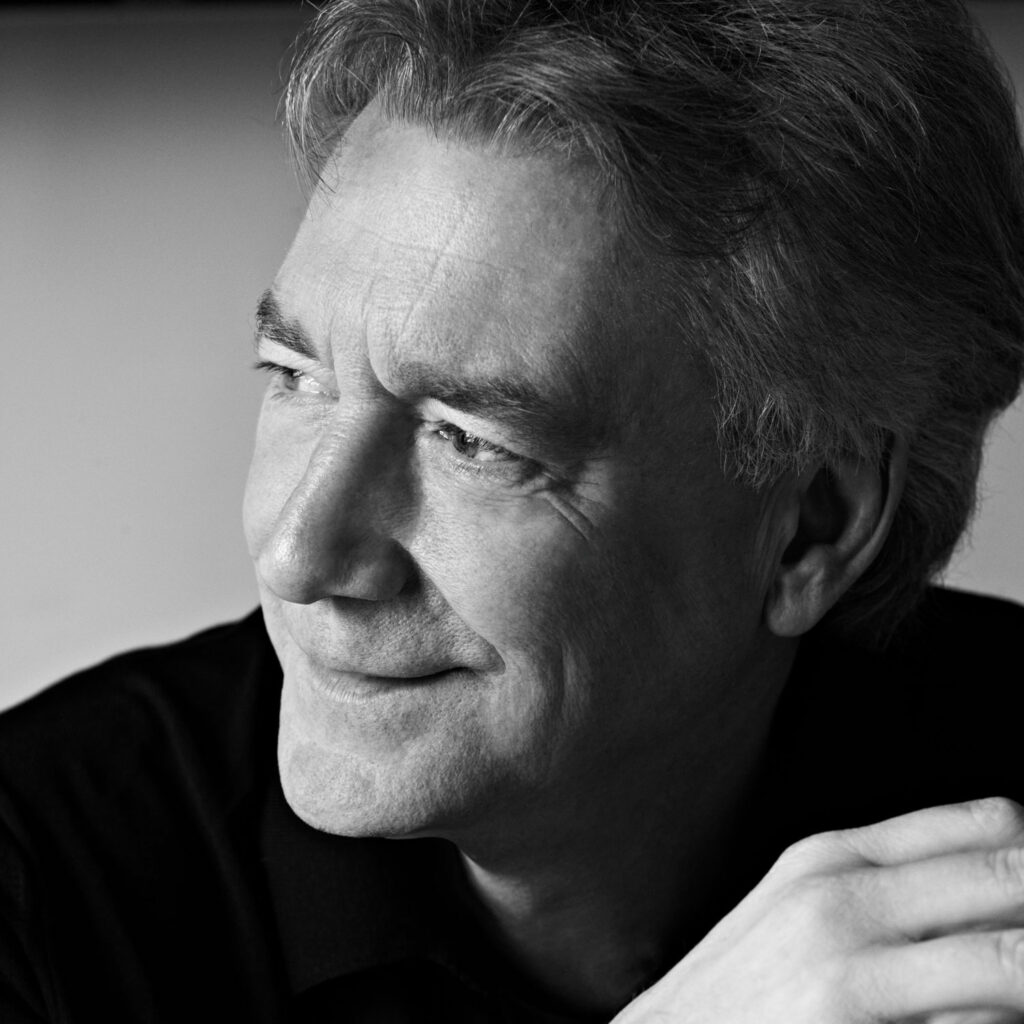
10 Questions With… Architect and Designer, Victoria Yakusha
Ukrainian architect, designer, and artist Victoria Yakusha thinks of herself as a global ambassador of Ukrainian design. Her practice transcends boundaries, but it remains firmly rooted in her connection to her home country. In 2006, she founded her award-winning architecture and interiors firm, Yakusha Studio. And in 2014, Yakusha founded FAINA, a design brand that offers furniture, décor, and lighting influenced by Ukrainian heritage.
Over the years, both endeavors have gathered international accolades and attention. Yakusha’s work has been featured in the Venice Biennale, Paris Design Week, and Milan Design Week. This winter, she had her Florida debut, presenting “The Land of Light” at Design Miami. The limited-edition seating collection was inspired by four mythical Ukrainian creatures. Made of eco-friendly materials, the objects are both playful and subtle.
To shed light on these projects, and her overall practice, Victoria Yakusha spoke with Interior Design about her early years, recent projects, and the ongoing challenge of the war in Ukraine.
Victoria Yakusha Talks Design, Craft Tradition, and More

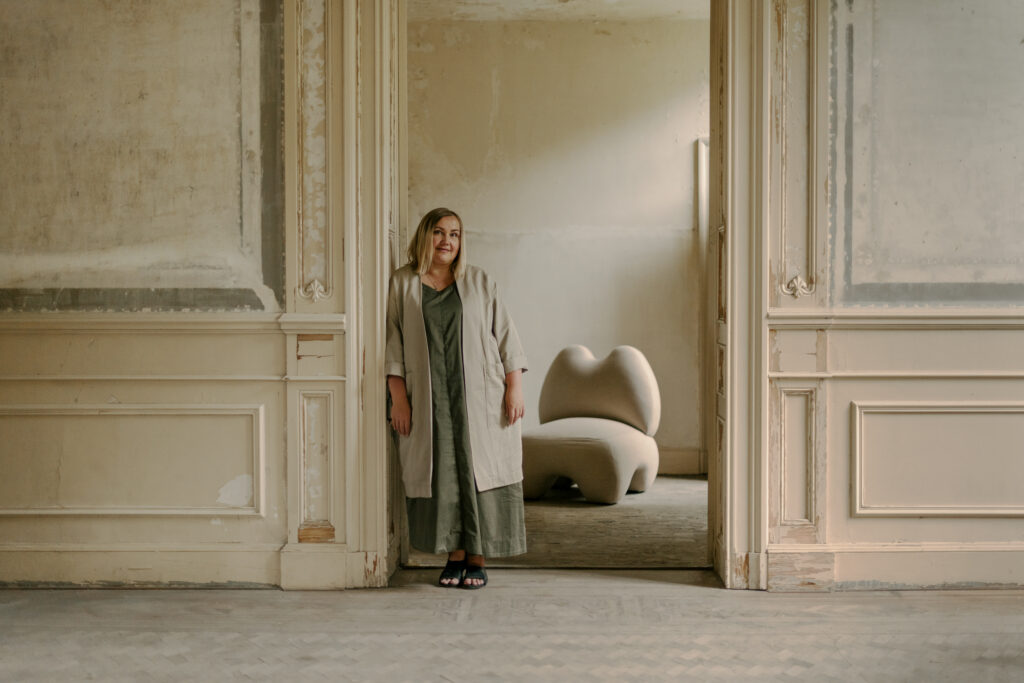
Interior Design: In 2014, you founded design brand FAINA, what prompted or guided that decision?
Victoria Yakusha: In 2014, a series of transformative political events took place in Ukraine, now known as the Revolution of Dignity. It was a time for many Ukrainians to reflect on their identity. It sparked questions like ‘Who are we?’ and ‘What will we leave behind?’ The moment of FAINA’s birth is very vivid in my memory. I was on the way from Kyiv to Dnipro, my hometown, listening to the horrible news of death and destruction and feeling helpless amidst the world watching in horror but not being able to do anything. I wanted to make a contribution to my country in any way that I could, and I saw design as a way to communicate its heritage and values and its powerful DNA. An idea came to me that I could create scalable designs and introduce them to buildings and spaces anywhere in the world, and they could inspire people and tell our stories.
FAINA wasn’t something I founded to just make things or market myself. I sometimes say that I didn’t invent FAINA, it chose me to tell stories through my design.
ID: How does your work engage with ancestral techniques, customs, and materials?
VY: My work was and is inspired by everything around me—Ukrainian nature, culture, traditions—and I looked for ways to preserve and share our cultural heritage. I’ve always been drawn to things made by hand and with love. Many regions of Ukraine have craft techniques that are on the verge of disappearing. By integrating them into my work, I give them an opportunity to live in this contemporary world, connecting the past and the present, opening a path to prosperity.
My Design Miami/ Basel installation in 2022 included a tapestry that was created using an ancient artisanal technique known as lizhnykarstvo, which is thought to have originated in the Carpathian Mountains. Another technique we have been inspired by is known as valkuvannya, a method of adding layers of material to a base, which has typically been used to finish the walls of houses. These techniques are increasingly rare—but they are beautiful, sustainable and feel fresh and of our times.
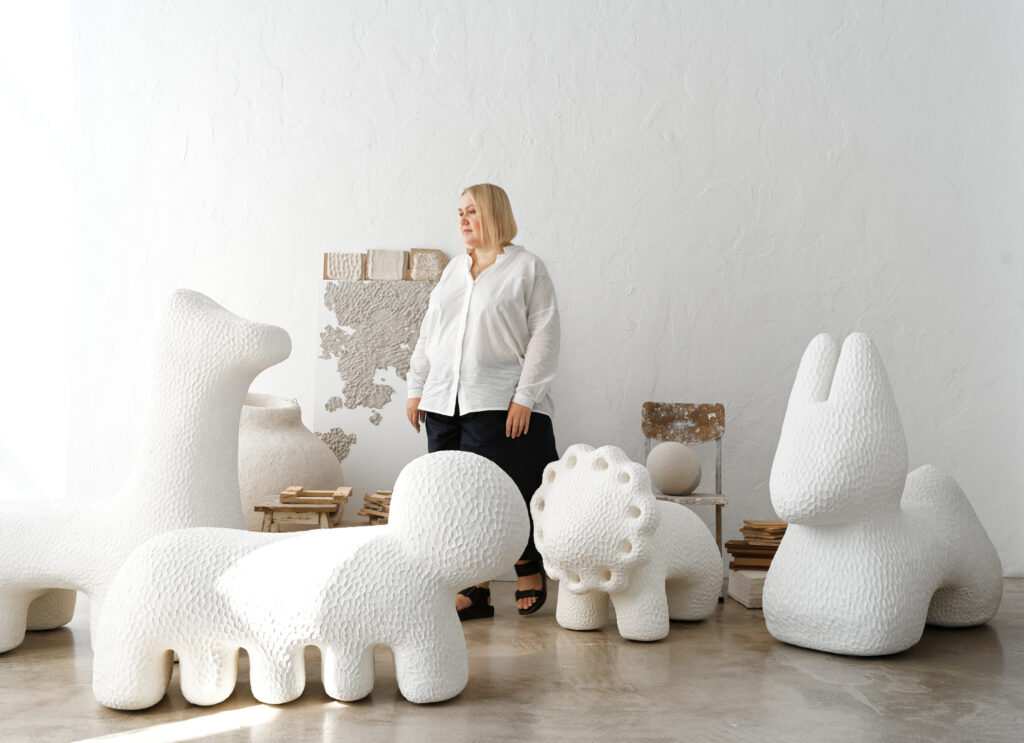
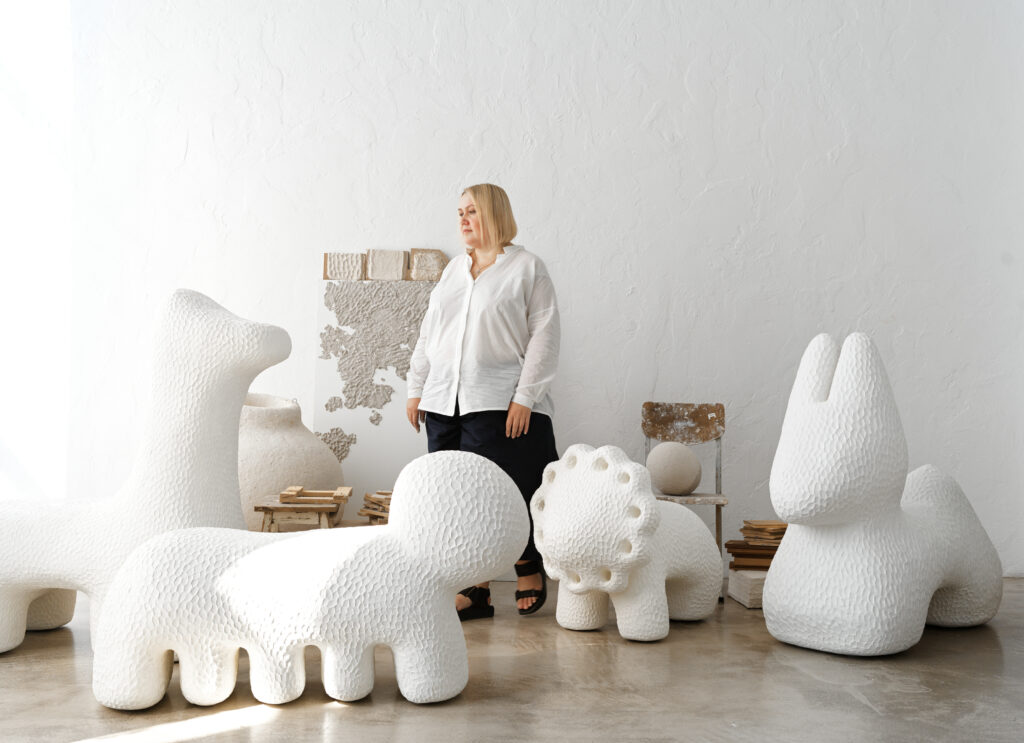
ID: How do the natural cycles, and materiality, influence your work, both with furnishings and within architecture and interiors?
VY: All of these are at the very foundation of FAINA. They are connected to our ancestors’ way of living. Our ancestors followed the sun and the cycles of nature. Many of these principles are coming back, we are now becoming more aware of the benefits of such lifestyle—eating what’s in season being the most obvious one—they result in being in harmony with nature and oneself, being healthier, being more connected. From the start, we looked to promote and demonstrate exactly what is very natural for us, people—to all people, all nations. When we launched our “Following the Sun” collection, we did live broadcasts with famous designers from all around the world. The main topic of these broadcasts was to talk about and compare the various traditions around the winter and summer solstices—and there were more similarities than differences. If we look back far enough, we find unity. Primacy unites all people.
ID: How has your approach changed over the course of your career?
VY: I am an architect by profession and have been working as an architect from 2007, creating sensuous, minimalist buildings and spaces. But I know now that it did not fully reflect my personality. With the appearance of FAINA, I found my “live minimalism” style—a combination of the past and the future. Being able to work and express myself through these two design disciplines helps me answer the two above questions: “Who am I?” and “What will I leave behind?” It’s in my work. But to find these answers, I needed to know who I was. FAINA really helped me with that, and it also added a deep cultural layer to our interior architecture work. In 2021, my architecture practice received an award for an interior of bar and restaurant spaces. The jury noted that it had that “cultural DNA” that you can’t quite put your finger on, but you can feel it.


ID: Can you tell us about a time during your career when you felt a great sense of wonder, adventure, or surprise?
VY: It was probably 2019 for me when Vogue USA unexpectedly wrote about me. The editor approached us in Stockholm after seeing our products and being delighted by our work. Then the article appeared and suddenly people knew about us. I was taken by complete surprise because at that time, my activity was about my inner worldview and I was not influenced by anyone, didn’t try to copy any trends. The world saw the product that had not existed before, the forms that were not in fashion. Something that had not been copied anywhere, there were no guideposts except their own internal ones. And when I learned that someone on the outside thought these were very brave things, it came as both a big surprise and a confirmation for me that I was on a right path.
ID: Can you tell us about how you came to use muslin in your eco-conscious lighting collection, Sluhach, and how materiality guided the ethos of the lamps?
VY: I really like unexpected and emotional textures, and I have wanted to work with fabric for a long time. I create narratives with my designs so for this collection, I worked with a concept of a “listener.” (Sluhach means listener in Ukrainian.) As an architect, I feel very attuned to every space, and I wanted to convey that concept with the objects in the collection. They are kind of animistic creatures and they each have “locators” that they use to “listen” to the space—not in an intrusive, technological sense of the word! They “listen” to the moods, energies, dreams, and aspirations. We, people, don’t only listen with our ears—we listen with every cell of our bodies—so these objects not only have “locators” but also “ribs” made of fabric, additional receptors that they use to feel.


ID: The FAINA Gallery in Antwerp is within a historic building that is 500 years old. How did that history and the unique site inform that interior project?
VY: I had been looking for a place to open our gallery for more than half a year. Its spirit, history, what it says, is important to me. I wanted it to convey historicity and modernity, and also to include elements of our culture. The result is a combination of different cultures in one room. Because the space has so much character and could not (nor should) be covered with anything but natural coatings, I looked to amplify it—therefore its walls became a feature. We used special paints and applied 12 layers of different colors to achieve this very special effect.

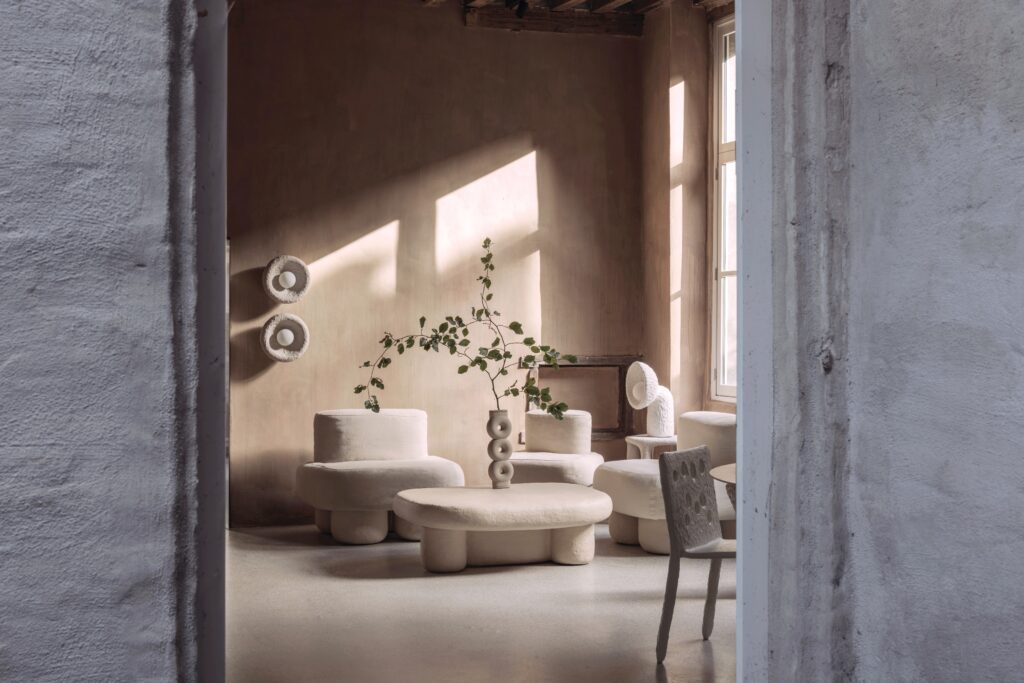
ID: What were you hoping to accomplish or communicate at “The Land of Light” at Design Miami/ Basel in December?
VY: My goal was to convey a key message that no matter what is happening in the world, despite the darkness around us, one has to keep oneself grounded and make one’s way through the darkness. It is hard to do. That’s why the “animals” are there—they are guides to help us navigate and support that determination. Similar to the lamp collection, they each have their own properties—whether it’s giving perspective, accelerating your journey, illuminating the right path, or offering discernment and wisdom. Inspired by my personal history and experiences, it is a message of hope and a reminder to keep your inner light and spread it.


ID: What has been your greatest challenge over the years?
VY: Every challenge pales in comparison to the war. War is the biggest challenge. Even though at the beginning of the full-scale invasion we already had a gallery in Antwerp and a growing international reputation, our team, our people are the heart of the practice. And suddenly we’re thrown into this new world where your people sink into despair and depression, or go to the front, or someone close to us dies… Keeping the faith, continuing to see meaning and purpose in our work, and working in a country which is under attack every single day is the most difficult challenge. And it’s not over, we must remember that.
ID: What upcoming projects are you most excited about?
VY: For a few years now, I have been working on and helping raise funds for Maria Prymachenko Museum. The idea is to create a cultural complex in the village of Bolotnya in Ukraine to house artworks by this folk painter. She was a self-taught artist, born to humble means, and she was a big inspiration for such artists as Picasso and Chagal with her dazzlingly colorful and inventive scenes of animals: lions, cows, horses, and birds. She is a person who inspires me a lot, a symbol of Ukraine and pure energy. But things are not going so fast because of the war, and I know that it will take a very long time to complete this project—but I hope that it will be done.

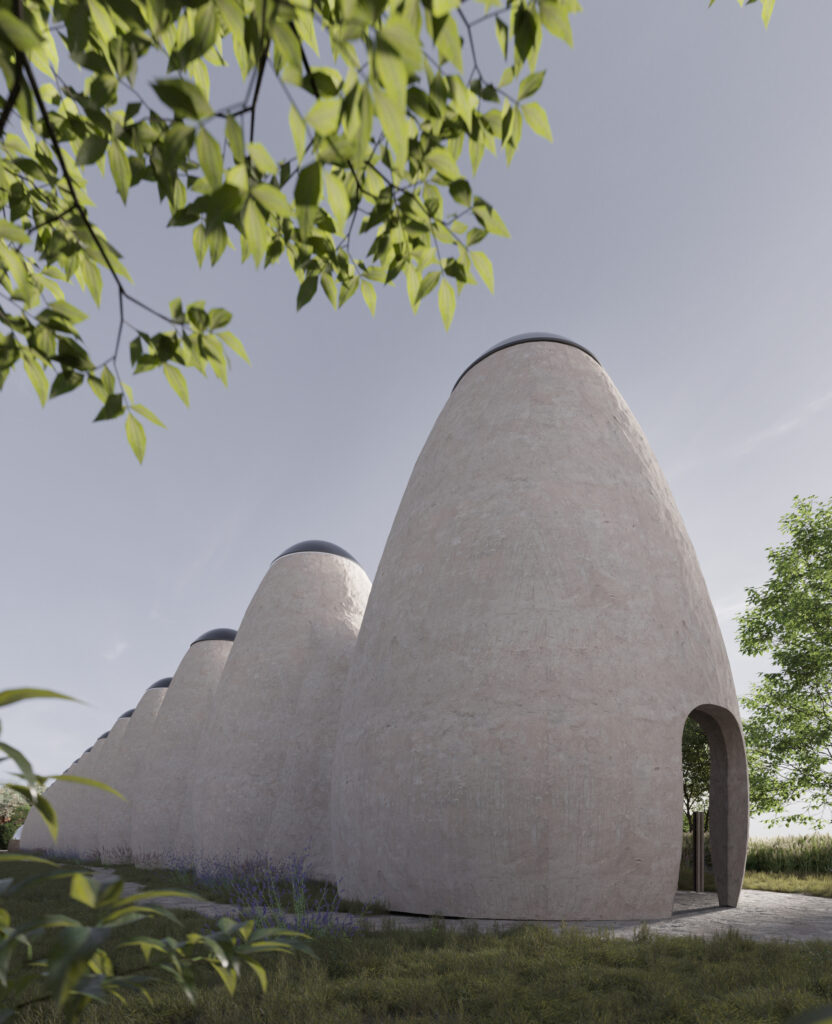




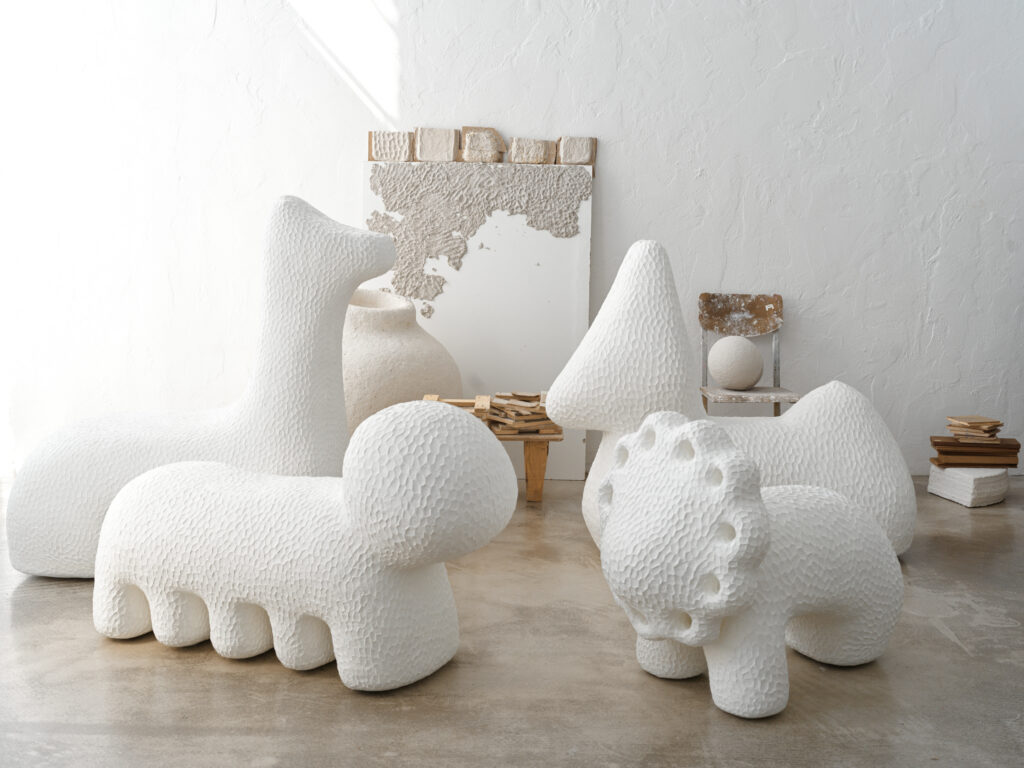

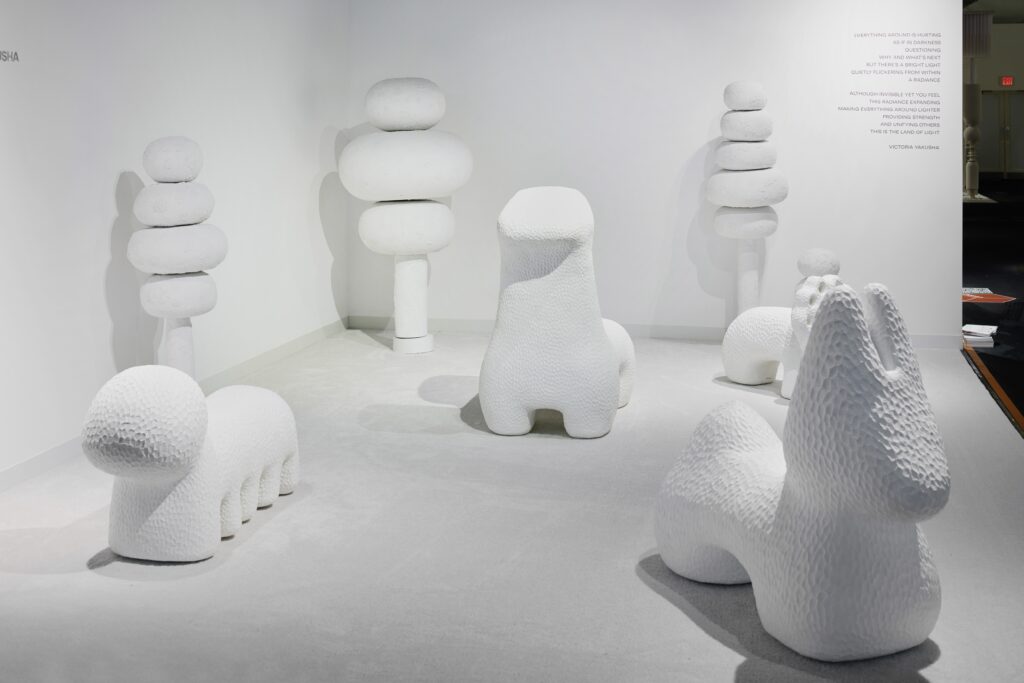

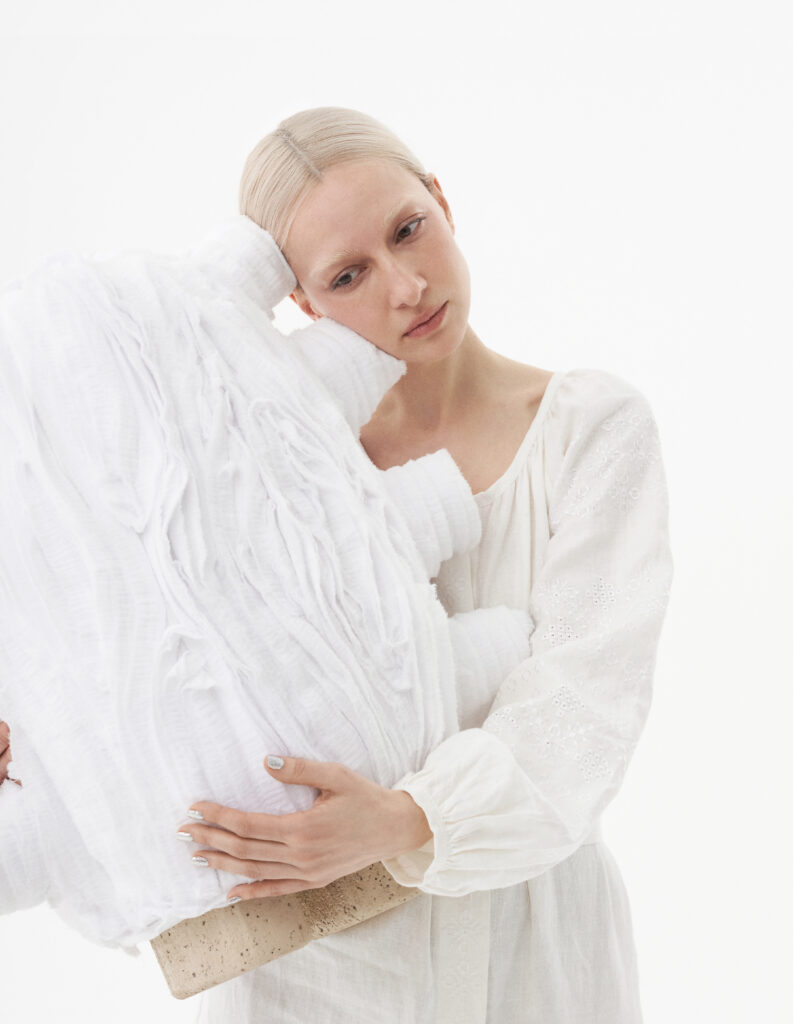

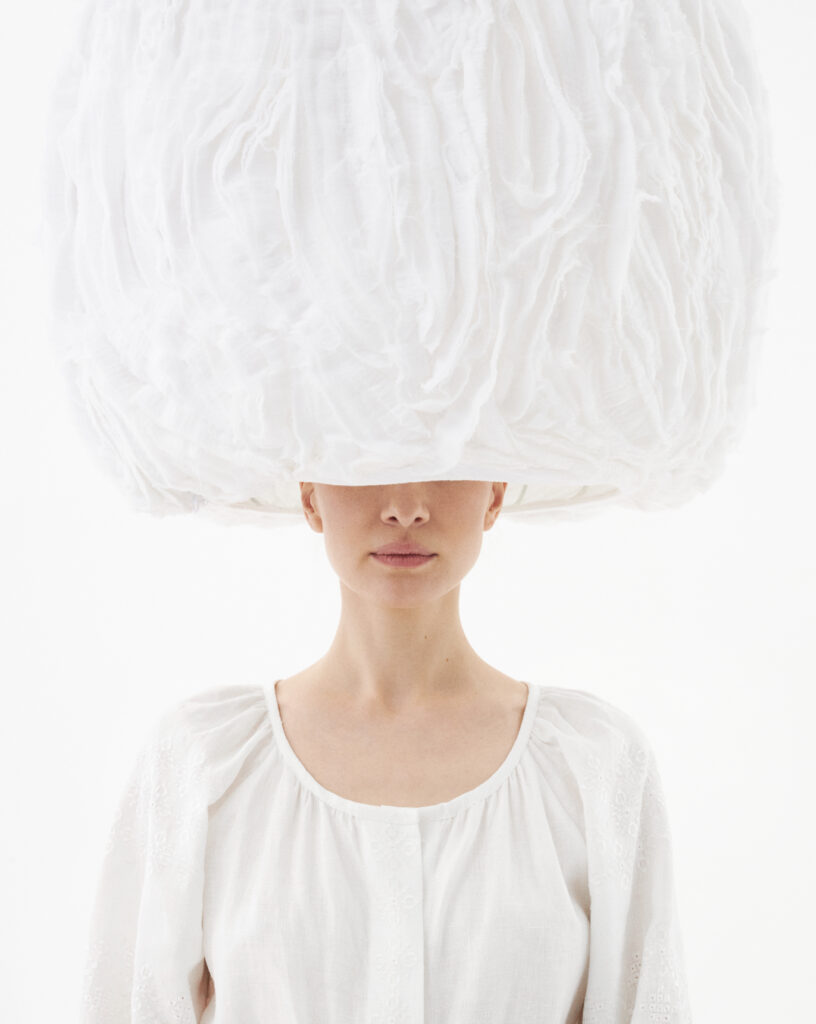
read more
DesignWire
Jeffrey Beers, Hospitality Design Pioneer, Dies at 67
Jeffrey Beers, an innovative architect who transformed the hospitality industry with his fresh and unexpected designs, recently passed away at 67.
DesignWire
On the Move: March Design Industry News
From Perkins&Will to HGA, check out the most recent industry promotions, new hires and company news in Interior Design’s latest edition of On the Move.
DesignWire
10 Questions With… Noguchi Museum Director Amy Hau
The Noguchi Museum director Amy Hau shares her experiences working with Isamu Noguchi and how she plans on cultivating the museum’s growth.

